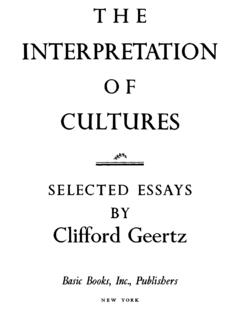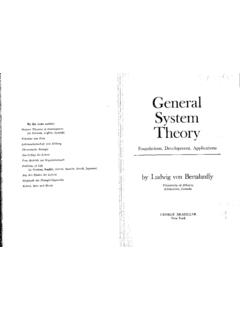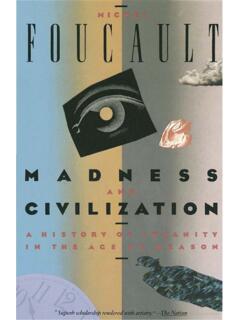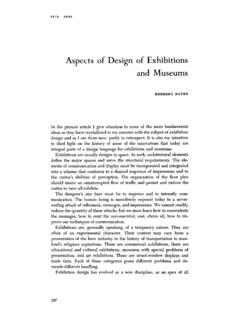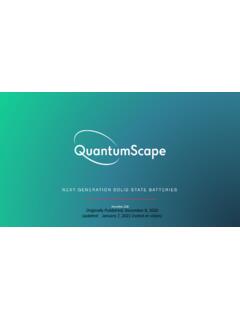Transcription of The Sciences of the Artificial - Monoskop
1 The Sciences of the Artificial Third edition Herbert A. Simon title : The Sciences of the Artificial author : Simon, Herbert Alexander. publisher : MIT Press isbn10 | asin : 0262193744 print isbn13 : 9780262193740 ebook isbn13 : 9780585360102 language : English subject Science--Philosophy. publication date : 1996 lcc : 1996eb ddc : subject : Science--Philosophy. Page iv 1996 Massachusetts Institute of Technology All rights reserved. No part of this book may be reproduced in any form by any electronic or mechanical means (including photocopying, recording, or information storage and retrieval) without permission in writing from the publisher. This book was set in Sabon by Graphic Composition, Inc. Printed and bound in the United States of America.
2 Library of Congress Cataloging-in-Publication Data Page v Simon, Herbert Alexander, 1916 The Sciences of the Artificial / Herbert A. ed. p. cm. Includes bibliographical references and index. ISBN 0-262-19374-4 (alk. paper).ISBN 0-262-69191-4 (pbk.: alk. paper) 1. Science Philosophy. I. Title. 1996 '1dc20 96-12633 CIP Page vi To Allen Newell in memory of a friendship Page vii Contents Preface to Third Edition ix Preface to Second Edition xi 1 Understanding the Natural and Artificial Worlds 1 2 Economic Rationality: Adaptive Artifice 25 3 The Psychology of Thinking: Embedding Artifice in Nature 51 4 Remembering and Learning: Memory As Environment for Thought 85 5 The Science of Design: Creating the Artificial 111 6 Social Planning: Designing the Evolving Artifact 139 7 Alternative Views of complexity 169 8 The architecture of complexity .
3 Hierarchic Systems 183 Name Index 217 Subject Index 221 Page ix Preface to Third Edition As the Earth has made more than 5,000 rotations since The Sciences of the Artificial was last revised, in 1981, it is time to ask what changes in our understanding of the world call for changes in the text. Of particular relevance is the recent vigorous eruption of interest in complexity and complex systems. In the previous editions of this book I commented only briefly on the relation between general ideas about complexity and the particular hierarchic form of complexity with which the book is chiefly concerned. I now introduce a new chapter to remedy this deficit. It will appear that the devotees of complexity (among whom I count myself) are a rather motley crew, not at all unified in our views on reductionism.
4 Various among us favor quite different tools for analyzing complexity and speak nowadays of "chaos," "adaptive systems," and "genetic algorithms." In the new chapter 7, "Alternative Views of complexity '' ("The architecture of complexity " having become chapter 8), I sort out these themes and draw out the implications of artificiality and hierarchy for complexity . Most of the remaining changes in this third edition aim at updating the text. In particular, I have taken account of important advances that have been made since 1981 in cognitive psychology (chapters 3 and 4) and the science of design (chapters 5 and 6). It is gratifying that continuing rapid progress in both of these domains has called for numerous new references that record the advances, while at the same time confirm and extend the book's basic theses about the Artificial Sciences .
5 Changes in emphases in chapter 2 reflect progress in my thinking about the respective roles of organizations and markets in economic systems. Page x This edition, like its predecessors, is dedicated to my friend of half a lifetime, Allen Newell but now, alas, to his memory. His final book, Unified Theories of Cognition, provides a powerful agenda for advancing our understanding of intelligent systems. I am grateful to my assistant, Janet Hilf, both for protecting the time I have needed to carry out this revision and for assisting in innumerable ways in getting the manuscript ready for publication. At the MIT Press, Deborah Cantor-Adams applied a discerning editorial pencil to the manuscript and made communication with the Press a pleasant part of the process.
6 To her, also, I am very grateful. In addition to those others whose help, counsel, and friendship I acknowledged in the preface to the earlier editions, I want to single out some colleagues whose ideas have been especially relevant to the new themes treated here. These include Anders Ericsson, with whom I explored the theory and practice of protocol analysis; Pat Langley, Gary Bradshaw, and Jan Zytkow, my co-investigators of the processes of scientific discovery; Yuichiro Anzai, Fernand Gobet, Yumi Iwasaki, Deepak Kulkarni, Jill Larkin, Jean-Louis Le Moigne, Anthony Leonardo, Yulin Qin, Howard Richman, Weimin Shen, Jim Staszewski, Hermina Tabachneck, Guojung Zhang, and Xinming Zhu. In truth, I don't know where to end the list or how to avoid serious gaps in it, so I will simply express my deep thanks to all of my friends and collaborators, both the mentioned and the unmentioned.
7 In the first chapter I propose that the goal of science is to make the wonderful and the complex understandable and simple but not less wonderful. I will be pleased if readers find that I have achieved a bit of that in this third edition of The Sciences of the Artificial . HERBERT A. SIMON PITTSBURGH, PENNSYLVANIA JANUARY 1, 1996 Page xi Preface to Second Edition This work takes the shape of fugues, whose subject and counter subject were first uttered in lectures on the opposite sides of a continent and the two ends of a decade but are now woven together as the alternating chapters of the whole. The invitation to deliver the Karl Taylor Compton lectures at the Massachusetts Institute of Technology in the spring of 1968 provided me with a welcome opportunity to make explicit and to develop at some length a thesis that has been central to much of my research, at first in organization theory, later in economics and management science, and most recently in psychology.
8 In 1980 another invitation, this one to deliver the H. Rowan Gaither lectures at the University of California, Berkeley, permitted me to amend and expand this thesis and to apply it to several additional fields. The thesis is that certain phenomena are " Artificial " in a very specific sense: they are as they are only because of a system's being moulded, by goals or purposes, to the environment in which it lives. If natural phenomena have an air of "necessity" about them in their subservience to natural law, Artificial phenomena have an air of "contingency" in their malleability by environment. The contingency of Artificial phenomena has always created doubts as to whether they fall properly within the compass of science. Sometimes these doubts refer to the goal-directed character of Artificial systems and the consequent difficulty of disentangling prescription from description.
9 This seems to me not to be the real difficulty. The genuine problem is to show how empirical propositions can be made at all about systems that, given different circumstances, might be quite other than they are. Page xii Almost as soon as I began research on administrative organizations, some forty years ago, I encountered the problem of artificiality in almost its pure form: .. administration is not unlike play-acting. The task of the good actor is to know and play his role, although different roles may differ greatly in content. The effectiveness of the performance will depend on the effectiveness of the play and the effectiveness with which it is played. The effectiveness of the administrative process will vary with the effectiveness of the organization and the effectiveness with which its members play their parts.
10 [Administrative Behavior, p. 252] How then could one construct a theory of administration that would contain more than the normative rules of good acting? In particular, how could one construct an empirical theory? My writing on administration, particularly in Administrative Behavior and part IV of Models of Man, has sought to answer those questions by showing that the empirical content of the phenomena, the necessity that rises above the contingencies, stems from the inabilities of the behavioral system to adapt perfectly to its environment from the limits of rationality, as I have called them. As research took me into other areas, it became evident that the problem of artificiality was not peculiar to administration and organizations but that it infected a far wider range of subjects.




